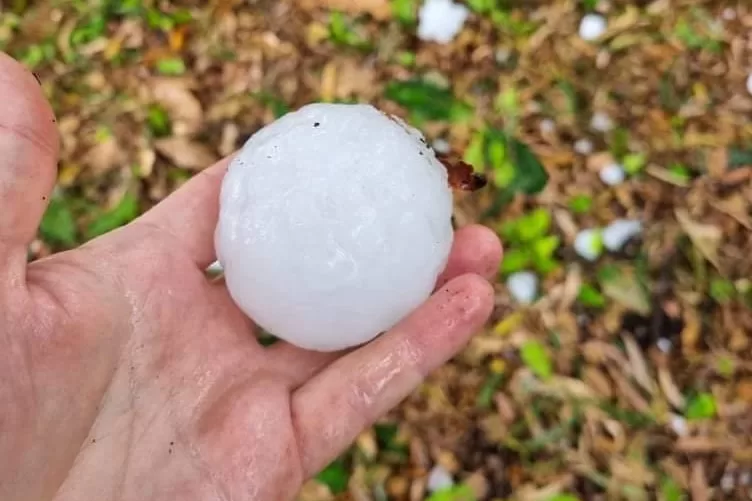Heavy hailstorms have wreaked havoc across Australia this summer.
But if you’re unlucky enough to have giant hailstones end up in your yard, scientists hope you won’t just take photos to post on social media but will preserve the icy lumps for research.
Key points:
- Researchers are asking people to preserve hailstones
- Scientific testing on hailstones can improve weather radars
- You can preserve hailstones by putting them in the freezer
University of Queensland (UQ) senior research fellow Joshua Soderholm is leading a hail research project and has studied hailstones from Mackay to Melbourne.
Dr Soderholm extracts data found in large hailstones through a 3D scanner to add to a global database, comparing hailstones from across the world.
So, why does this matter?
In short, the research can help to improve weather radar systems.
“For the first time, we can start to improve the estimates we get from weather radar of giant hail, and also the way we model giant hail,” Dr Soderholm said.
The research shows hailstones have rings, like trees, which represent a life cycle.
The hailstone’s life cycle can then be compared to the weather radar to see how accurate the predictions were.
This can be used for future warnings to predict the size and scale of a hailstorm more precisely.
How do you preserve hailstones?
The simple answer is to place the hailstone in a plastic bag and chuck it in the freezer.
But there are a few more steps in the process.
Thomas Hinterdorfer from Higgins Storm Chasing, an independent weather group, has been working with Dr Soderholm to get hailstones into the laboratory.
These are his tips for getting hailstones from your home to the lab.
First, safety is paramount, so wait until the storm is over before you venture out to hunt for hailstones.
Limit handling of the hailstone because heat from your body temperature will cause it to melt more quickly.
Place a ruler next to the hailstone and if it’s larger than 8 to 10 centimetres, take a photo – you’ve found one the scientists are looking for.
Seal it in a plastic bag to stop any other residual moisture attaching to the hail. This way it can maintain its size.
If you have more than one hailstone, place them in separate bags to stop them from sticking together.
Contact Mr Hinterdorfer through the Higgins Storm Chasing Facebook page and the details and photos will be passed on to the scientists at the University of Queensland.
There are no costs involved, and a team of researchers will collect the hailstone from you.
Australia leading global database
Dr Soderholm said his international research showed Australia was one of the top countries to receive large amounts of hail, particularly in Queensland.
“We’re very interested in large-sized hailstones, because there are just so few globally which have been collected,” he said.
“What makes us quite special in Queensland is we get a lot of hail on the coast, not many places in the world are similar in that way.”
Find more local news
Browse for your location and find more local ABC News and information
